How
to Help an Elephant make a U Turn
GK
Jayaram
Maven
Books (A Rupa Imprint), 2015
pp.263.
Price 500
One
more book on leadership; one more model that tells us that times are changing
–we live in a VUCAI (volatality, uncertainty, complexity, ambiguity and
interdependence) world and how we should instantly change; one more book that
proposes a new framework of leadership; one more book that talks down to the
reader; one more book that has all the “feel good” factors of leadership –
systems thinking, inclusiveness and how leadership comes from within.
 So
what is different in the book? To start with, the narrative style. The author
decides that he would have a conversation with the reader and therefore has a
one way conversation, peppered with comments that digress; he cracks poor jokes;
admonishes himself, and then moves on into the class room. It is not only
irritating, but also digressive from the arguments. And this style is not even consistent
through the book. If it were so it should not have had any trace of diagrams,
arrow marks, boxes; it is a conversation. These do appear, as the conversation
moves from the sidelines over a cup of tea to a more formal classroom and a
whiteboard with a marker. In between there is the digression of other voices of
business leaders pontificating on a specific question under the “leaderspeak”
head. These are interviews done by the author, with specific questions and
brief answers. The leaders giving sound bites possibly do not know the context
in which their quote would be used, and are just responding to the questions as
they encounter them. Therefore, these leaders make embarrassing guest
appearances in Jayaram’s leadership class. All in all the book is a mishmash of
styles good enough to put the reader off.
So
what is different in the book? To start with, the narrative style. The author
decides that he would have a conversation with the reader and therefore has a
one way conversation, peppered with comments that digress; he cracks poor jokes;
admonishes himself, and then moves on into the class room. It is not only
irritating, but also digressive from the arguments. And this style is not even consistent
through the book. If it were so it should not have had any trace of diagrams,
arrow marks, boxes; it is a conversation. These do appear, as the conversation
moves from the sidelines over a cup of tea to a more formal classroom and a
whiteboard with a marker. In between there is the digression of other voices of
business leaders pontificating on a specific question under the “leaderspeak”
head. These are interviews done by the author, with specific questions and
brief answers. The leaders giving sound bites possibly do not know the context
in which their quote would be used, and are just responding to the questions as
they encounter them. Therefore, these leaders make embarrassing guest
appearances in Jayaram’s leadership class. All in all the book is a mishmash of
styles good enough to put the reader off.
Beyond
these distractions what does Jayaram convey? The essence is this – we are
living in a time of a revolution of rising expectations (RORE). Western
societies have gone beyond RORE to a spiral of reduced expectations (SORE). “There is a need to
rejuvenate these societies and provide them with a sense of constructive
purpose. Hope needs rebirth; and for that we need great leaders” (p.2).
Jayaram
argues that there is something called a transcendent leader – a leader who would
connect to the followers, but also engage deeply with the immediate
surroundings and the larger world to evolve vision, values and strategies. He
argues that transformational leadership is a part of this. However, it is the
transcendent leaders that create transformational change in the organizations
(p.xiv).
The
transcendent leadership model is conceptualized as a 3+5 model. There are three
layers of foundation - integrity/character, intensity/courage and intelligence
+ intuition = imagination (p.42). Standing on these foundational elements are
five pillars of execution – self-awareness, empathy, interpersonal wisdom, our
world - community wisdom, Transcendence – global wisdom. This is the mantap on
which the rest of the arguments in the book are built. Jayaram picks up quotes
from the leaders, examples to illustrate his point from both his personal
experience and the global knowledge and fits them well into his argument. Following
this, there is a step-by-step roll out plan for transformation, with more
models identifying the pitfalls and speed breakers on the way and how the
leaders can carry people along. He ends the book by providing a model on how
the transcendent leadership could be modelled in a real life.
While
there are interesting questions that Jayaram deals with in his book – the usual
questions of whether leaders are born or can be trained, the question on
whether integrity could be taught or it is a value innate to people etc., the
answers to these are lost in the stylistic quagmire. For instance on the issue
of integrity he says “… companies have leadership development academies where they ‘teach’ the
code of conduct, but just as religions can vouchsafe and corporations concur, I
am sure no one has yet invented a sure-fire way of inculcating integrity in
every leader” (p.215). While
this section does talk about organizational credos, and codes of conduct, which
brings up organizational values that might dictate personal action he throws it
all away with this flippant conclusion: “From personal observation (I have no proof to
adduce), I would like to conclude that integrity can be ‘taught’ 49 percent of
the time, and the rest has to be learnt” (p.215).
Another
irritating feature of the book is the number of acronyms used – RORE, SORE,
VISTAR, YOCO etc., without providing a referral list of acronyms.
 The
book comes with some heavy endorsements, but as we have seen in the recent
past, the heavier the endorsement, the more suspect books are turning out to
be. I only wish that Jayaram’s book was a bit underwritten, more serious and
looked at the reader as a thinking-reflecting individual than an argumentative
Indian. He has converted something serious and profound into a chai pe charcha. It might be possible to have such a charcha with the author in person, but to use an
inanimate book as a medium for a charcha is irritating and
ill advised.
The
book comes with some heavy endorsements, but as we have seen in the recent
past, the heavier the endorsement, the more suspect books are turning out to
be. I only wish that Jayaram’s book was a bit underwritten, more serious and
looked at the reader as a thinking-reflecting individual than an argumentative
Indian. He has converted something serious and profound into a chai pe charcha. It might be possible to have such a charcha with the author in person, but to use an
inanimate book as a medium for a charcha is irritating and
ill advised.
© M S Sriram |








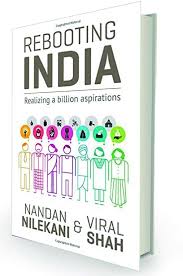








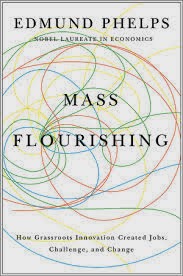









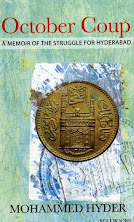

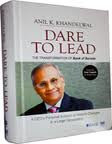









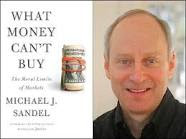




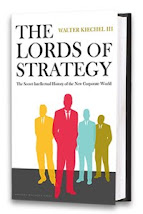











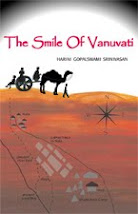


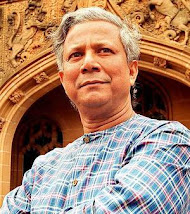
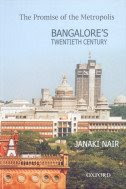







![Hyderabad: A Book [or two] and A Movie](http://3.bp.blogspot.com/_mxWA9ZVkKhQ/S0vnLAO90CI/AAAAAAAABYM/WgbSbAcAaEk/S214/luther1.0.jpg)

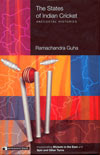





![Two Lives [and this is not about Vikram Seth]](http://1.bp.blogspot.com/_mxWA9ZVkKhQ/S0vjkyDYRvI/AAAAAAAABXM/mJGK-_gZiNg/S214/mansur.jpg)





No comments:
Post a Comment